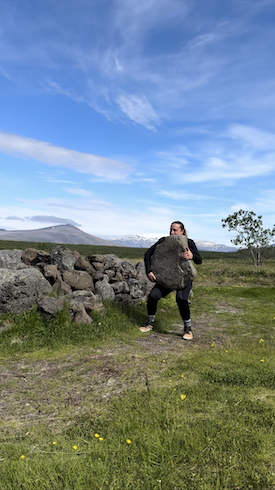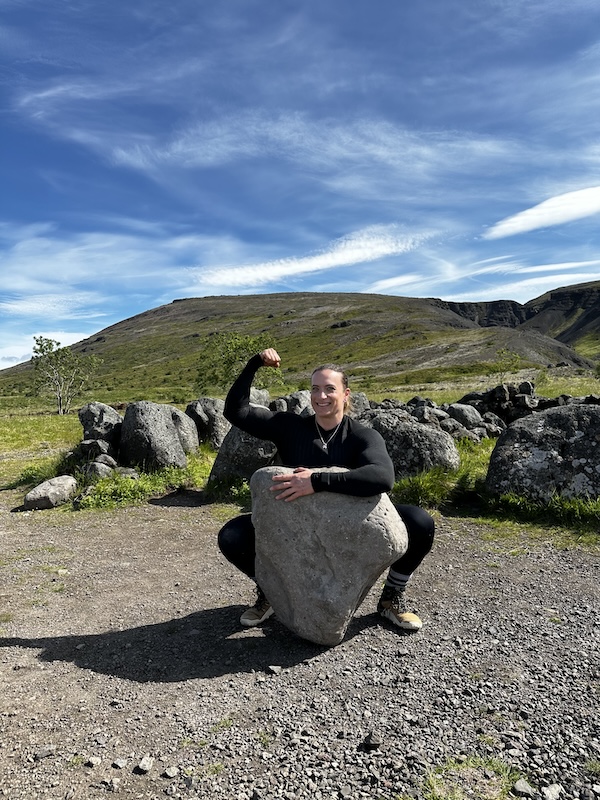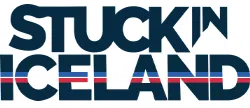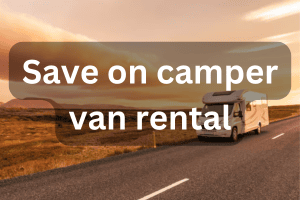Free and exclusive discount codes for hundreds of tours and & travel services in Iceland
Subscribe to instantly receive discount codes for tours, car rental, camper van rental, and outdoor clothing rental. Thank you! ❤️ Jon Heidar, Editor of Stuck in Iceland Travel MagazineFrom time immemorial, people have participated in strength competitions. This is only sometimes done for fun. Sometimes, you must demonstrate physical strength to be accepted for a job or at least stake your claim so you can belong to a group of tough people. A stark example is the so-called lifting stones at Djúpalónssandur beach on the beautiful Snæfellsnes peninsula. Four of them lie in the sand and await to be lifted. The lightest one is called Amlóði, lightweight and weighs 23 kilograms (50 pounds); the second one is ‘hálfdrættingur’ (half-as good), which weighs 49 kilograms (108 pounds), hálfsterkur (half-strong) weighs 100 kilograms (220 pounds) and fullsterkur (fully-strong) weighs a whopping 154 kilograms (340 pounds). I have never dared to mess with them; after all, I have one back, which I hope will last me a lifetime. But enter German strongwoman Sandra “Sunny” Bradley, who puts all of us desk jockeys to shame by conquering some of the toughest lifting stones of Iceland. And she is ready for more.
All the strong ladies
Sunny recently came to Iceland and lifted the fullsterkur mammoth on her own. Moreover, she used her time well. Sandra and her friend Liefia Ingalls lifted the notorious Húsafells-stone, which weighs 186 kilograms (410 pounds), multiple times. In 1986, a thirteen-year-old girl, Kristín Gísladóttir, lifted the notorious Húsafells-stone with some assistance to ensure she did not injure herself. Perhaps there have been other super-strong ladies who have conquered these formidable stones. But their names and feats of strength are lost to time. However, if I hear more confirmed stories of strong women who have conquered these stones, I will certainly update this article.
View this post on Instagram
A post shared by SUNNY 🇩🇪 | Strength Coach | Pro Strongwoman (@sandrabradley_)
But what is the story behind the stones at Djúpalónssandur?
Back in the day, this beach was one of the fishing bases in the south and west of Iceland, where farmers and farmhands would spend cold 14 weeks during the crucial winter fishing season. Fishing was best in the south and west of the country in late winter. Men would trek from all over the country to these seaside bases to prepare for the season’s start in mid-January. Just pause for a second and think about walking from the north of Iceland in mid-winter cross-country to the south or west coast. Standards have certainly changed; I am considered eccentric to cycle to work all year round. Most modern-day Icelanders shudder at the thought of walking long distances in winter.
The duel of death with the perils of the sea
The fishermen’s dwellings at those fishing bases were not more than stone or turf huts. Unfortunately, these men only had small and fragile rowing boats; the weather was (and is) completely unpredictable, and knowing how to swim was considered bad luck. It would only prolong your death-struggle was the common refrain. The result was an atrocious attrition rate. Society responded by inventing the saying: ‘The sea gives, and the sea takes.’ There was nothing else to be said, I suppose.
Iceland’s dark past echoes in the Djúpalónssandur lifting-stones
Male mortality was high indeed (although I am not saying that women had it easy). The 1703 census showed 20% more women than men. Icelander’s focus on unproductive sheep farming meant starvation would occur without fishing. This happens in a society where farmers control the labor force, forbidding people from living unattached to a farm. These laws were strictly enforced. So, nobody could live independently by the seashore and build wealth based on Iceland’s abundant fishing grounds. The result: The population ranged from 30 to 80 thousand until the late 19th century, when the laws about indentured servitude were abolished. People moved to coastal fishing villages, and living standards quickly improved when Icelanders could finally exploit the sea’s riches.
One of the world’s most challenging job interviews
But I digress. The legend is that the fishermen at Djúpalónssandur were required to lift ‘half-strong’ up on a plinth to be accepted as an oarsman. After all, battling the elements to the death on a small rowing boat would require strong rowers. Lifting those stones is no easy feat; the smooth, heavy stones present a formidable challenge that only the strongest can overcome.
The German strongwoman Sandra Bradley would have been home on a fishing crew at Djúpalónssandur. She is a four-time winner of Germany’s Stärkste Frau (Strongest Woman) competition and has also claimed the title of U82 Europe’s Strongest Woman. Sandra is also active on social media, sharing insights into her training and motivations. She emphasizes the importance of self-belief and facing fears as paths to personal growth.
Hey, Sunny; thank you for taking the time to do this interview with Stuck in Iceland Travel Magazine. What brought you to Iceland to lift these notoriously difficult-to-handle lifting stones of Iceland?
I have been interested in natural stone lifting for a long time already. Since I first saw the old “World’s Strongest Man” Re-runs as a teenager on TV, where they used the Húsafell as an Event, I wanted to become strong enough to do these crazy feats of strength one day. I also felt drawn to these stones’ incredible history and wanted to find out if I could become part of it.
I gather that conquering these lifting stones of Iceland was a significant milestone for you; what lessons did you learn from this challenge?
Lifting natural stones and training to lift them is not easy and proves to be a great challenge to teach you patience and perseverance. It requires you to develop not only strength but also a great deal of skill, grit, and determination. These are all skills that are useful not only in strength sports but also in life in general.
What inspired you to embark on a career as a strongwoman?
When I started my strongwoman career over a decade ago, I wanted to find the strongest version of myself and discover what I am capable of if I put in the work. I was also hoping to show other women that we can be insanely strong if we want to and that we gain so much more than physical strength in the pursuit of finding it.

Most of my readers are female; what advice do you have for my female readers who want to improve their physical and mental strength?
Just start! No matter where you are and your current fitness/strength level. You can always do something, no matter how small it is. It is also always possible to start, no matter what age. Take your time and take one step at a time. Strength Sport and life are like a marathon and not a sprint. Embrace the challenges and roadblocks ahead and be brave enough to keep going outside your comfort zone. But at the same time, be compassionate with yourself. Build a sound support system in your life with the people that are closest to you. A good and supportive community will enable you to go even further.
What is a day in the life of a strong woman like?
To be honest, it’s pretty normal. I just have 3-hour training sessions added to 3-5 days of my week. Haha. Besides that, I am busy working and spending time with my partner, dog, and friends.

Apart from your battle with the lifting stones of Iceland, what did you think of the country?
Iceland is a breathtaking and magnificent country. It was my second time here, and I had already fallen in love with it the first time. I want to return for a trip around the whole Island since we haven’t seen everything yet.
Can you tell my readers what other places you visited here in Iceland?
I have been visiting the south and went as far as Höfn and Stokksnes and Reykjavik and its surrounding area. On the West side, I only got as far up to Grundarfjörður on the way to Dritvik.

Will you be returning to battle with more of the lifting stones of Iceland?
I want to come back again. My goal is to do more exploring and hiking across the whole island and add some other lifting stones on the trip, like the Leggstein, the Judas Stone, and Brynjólfstak.




